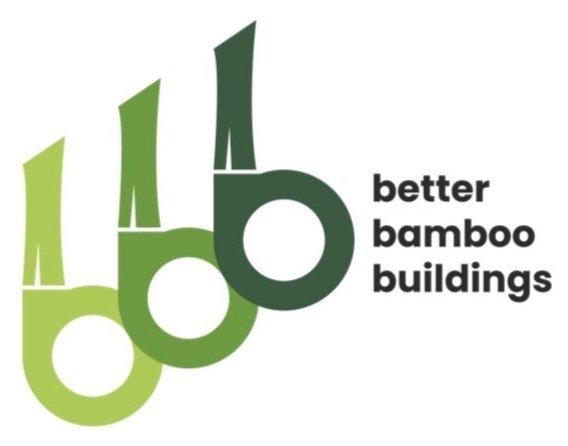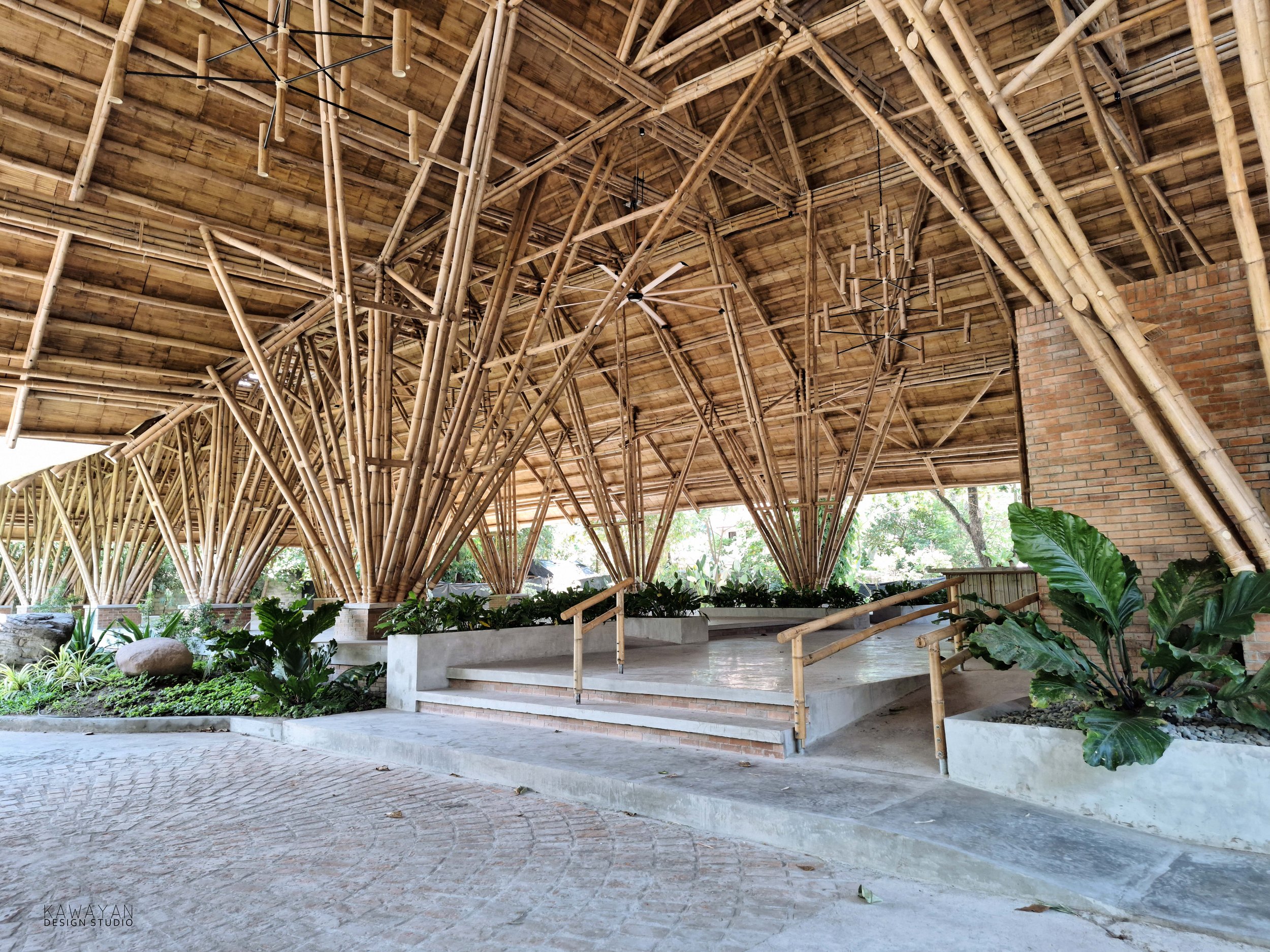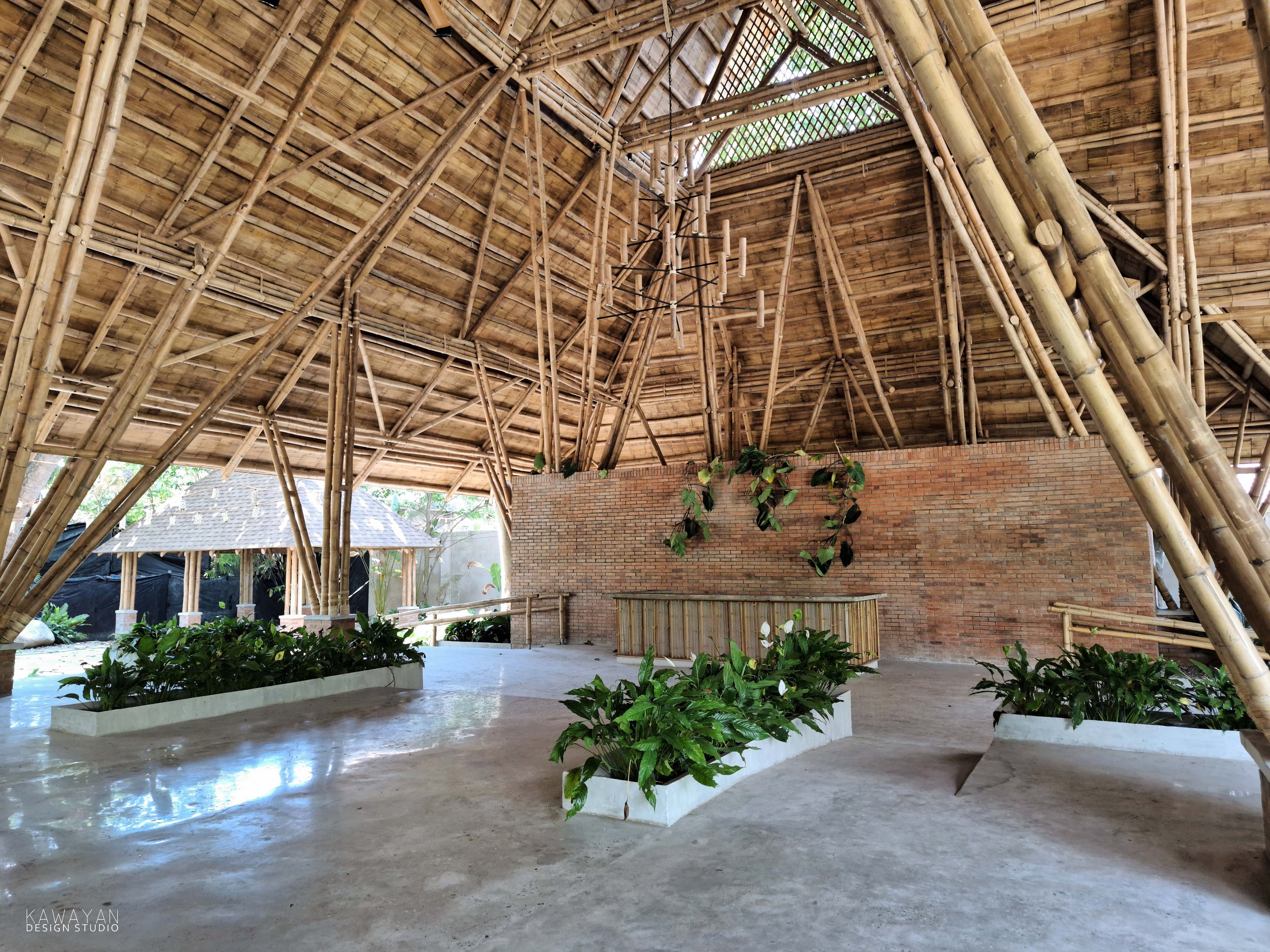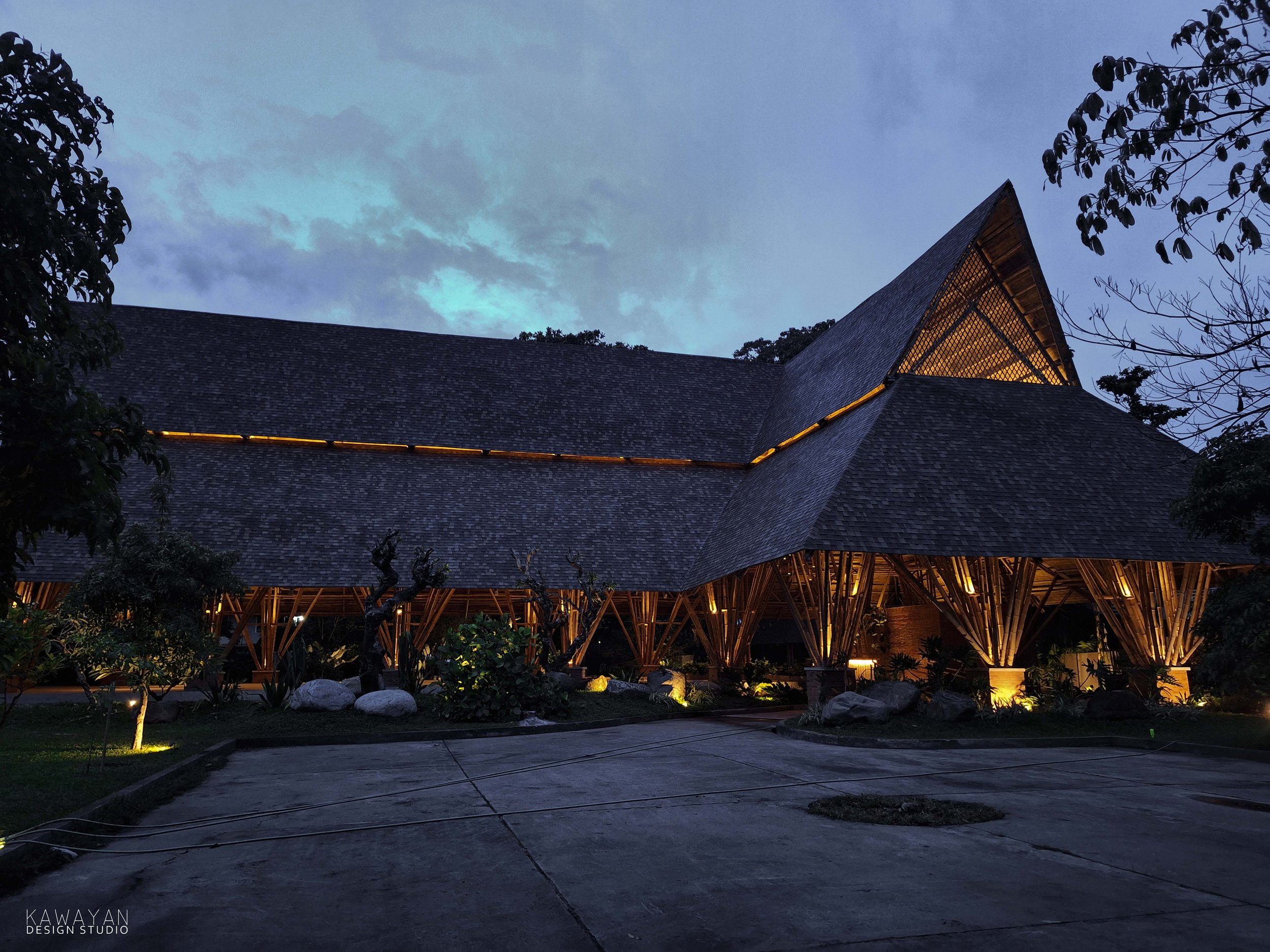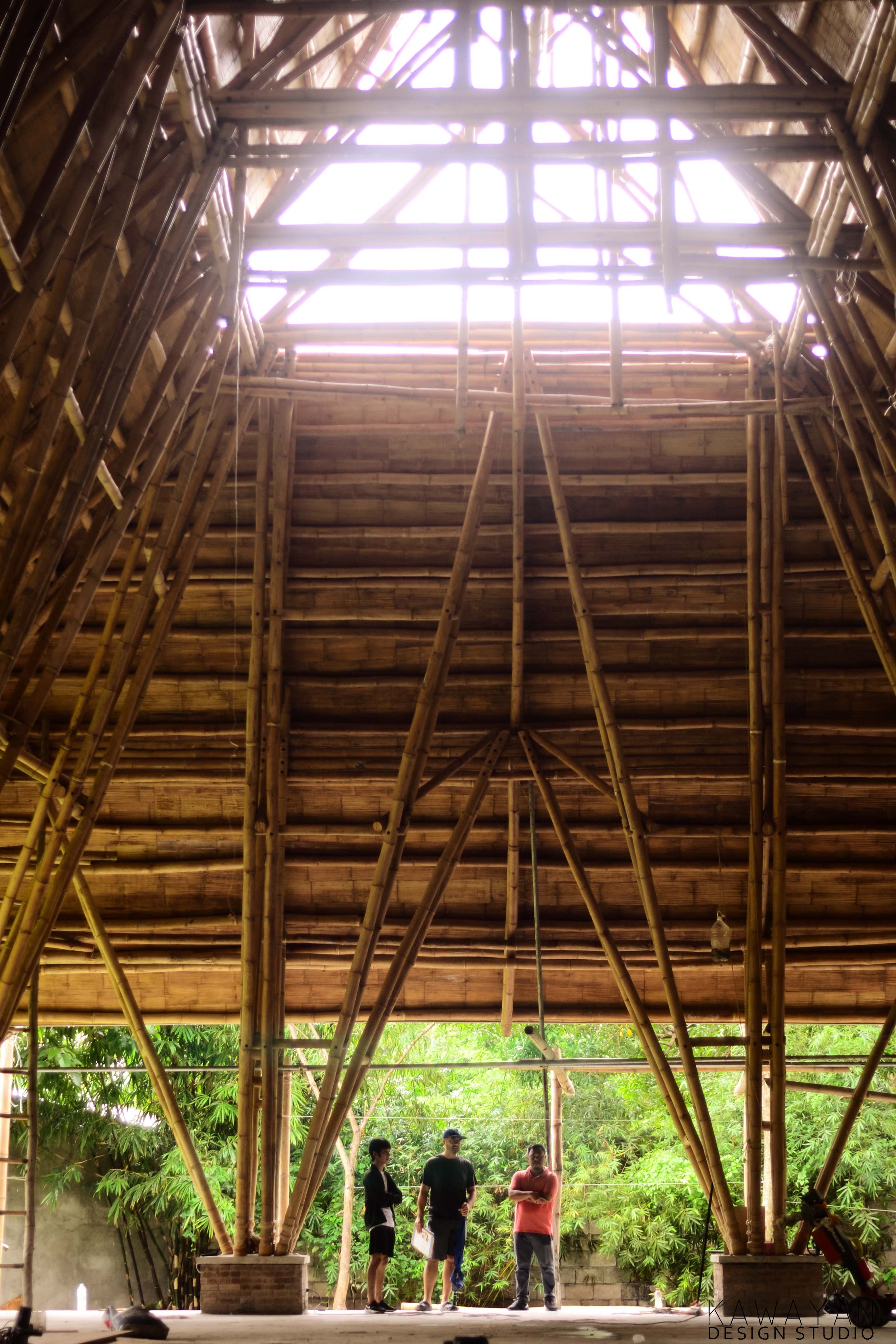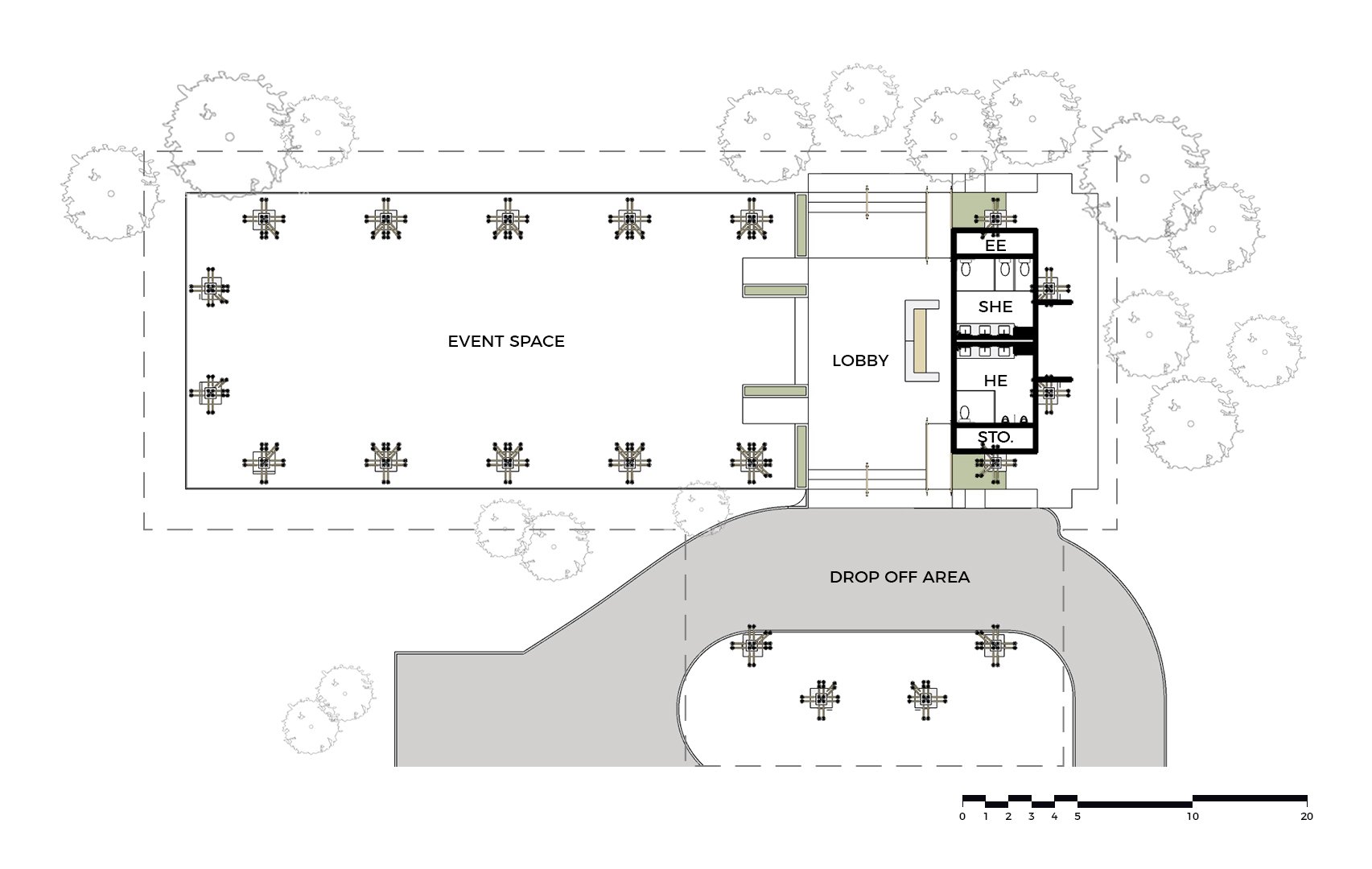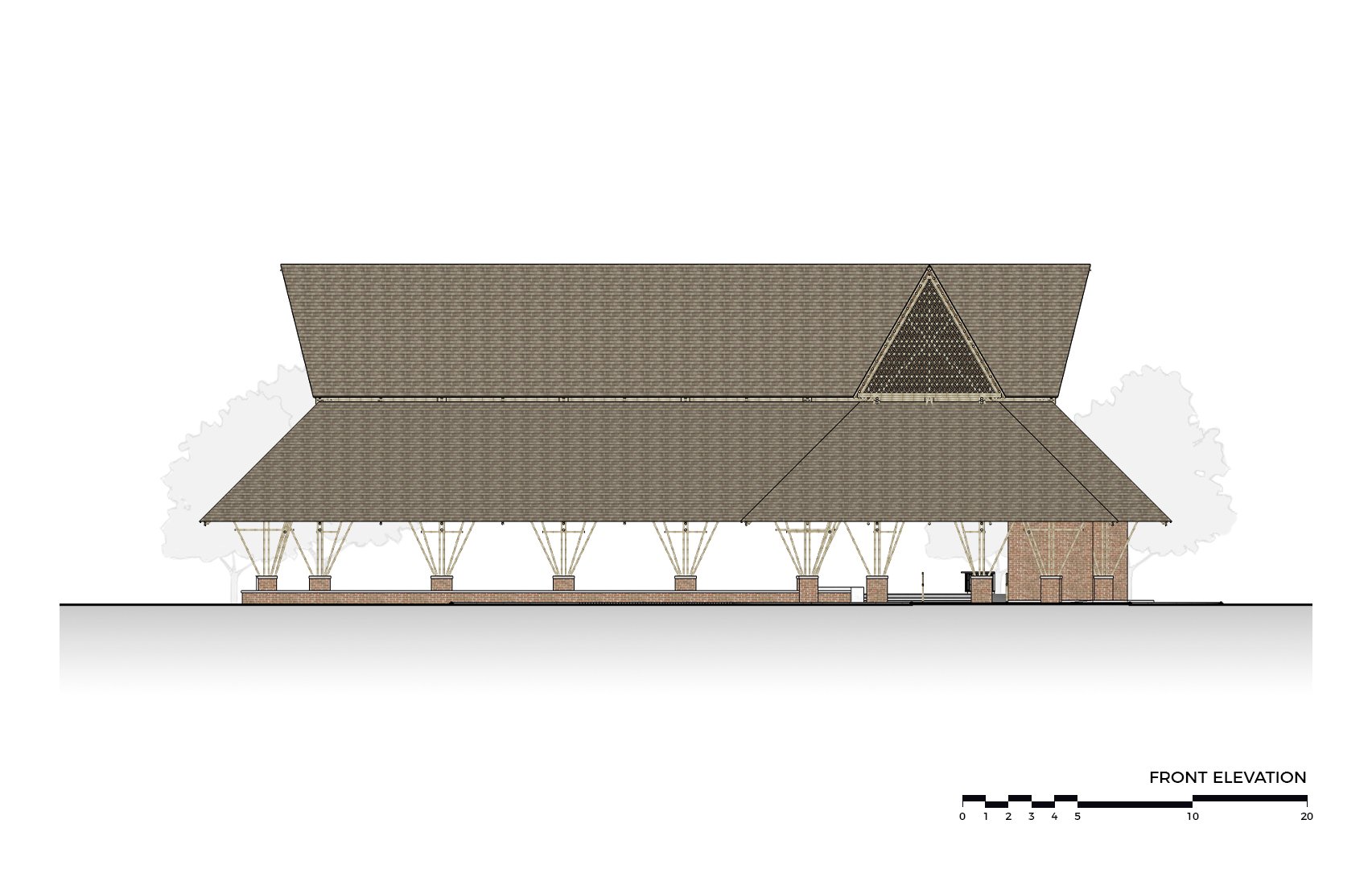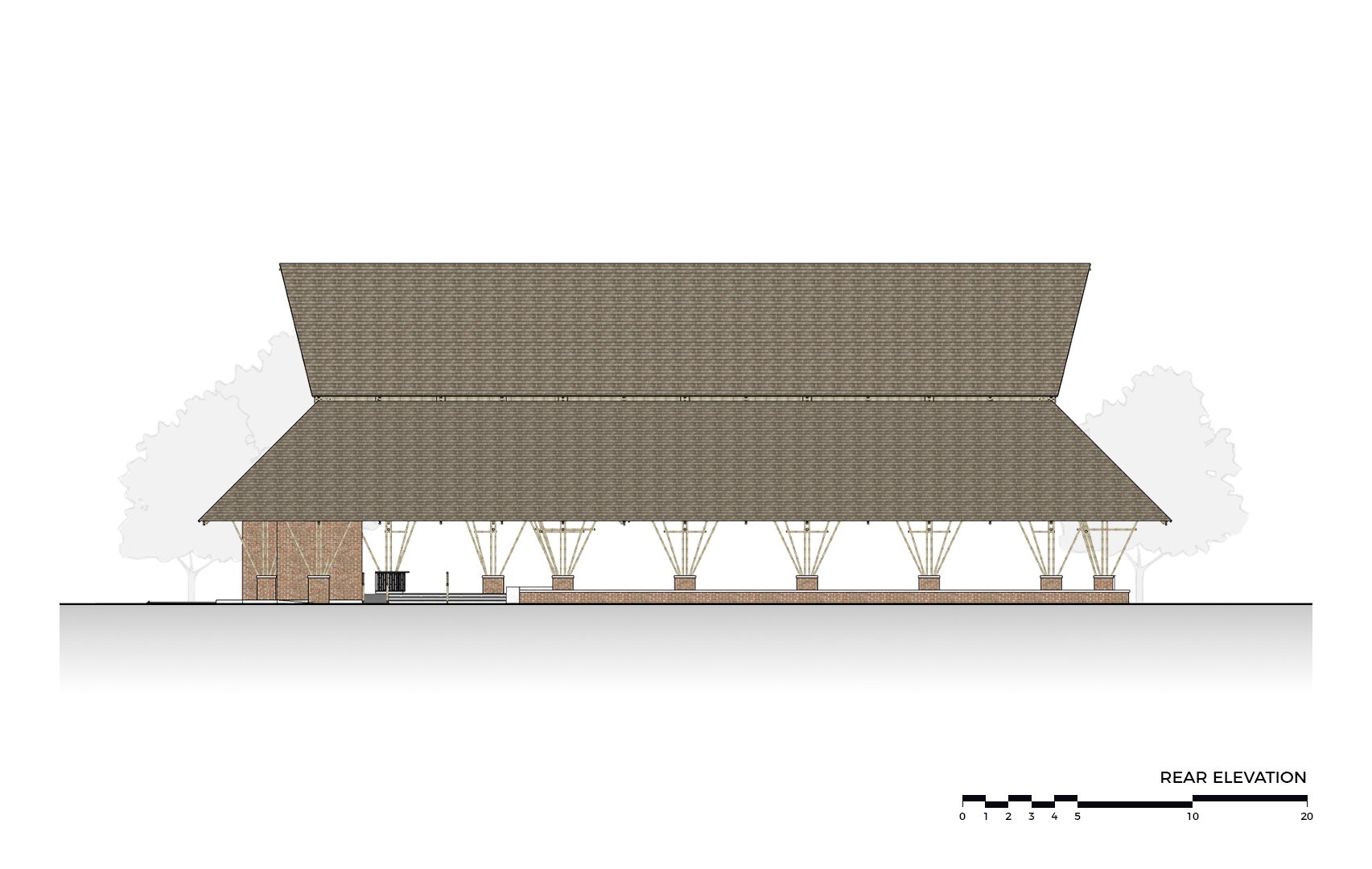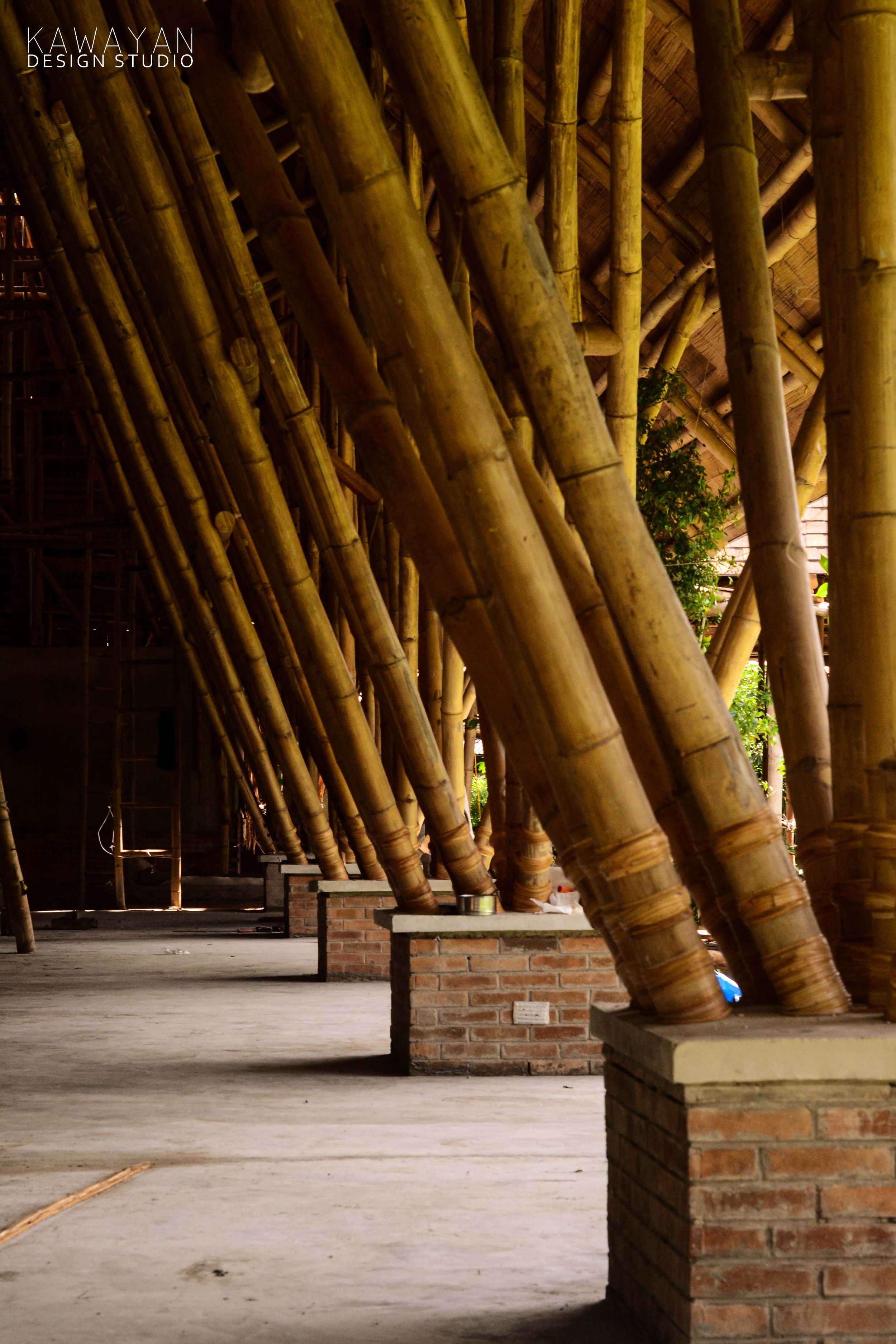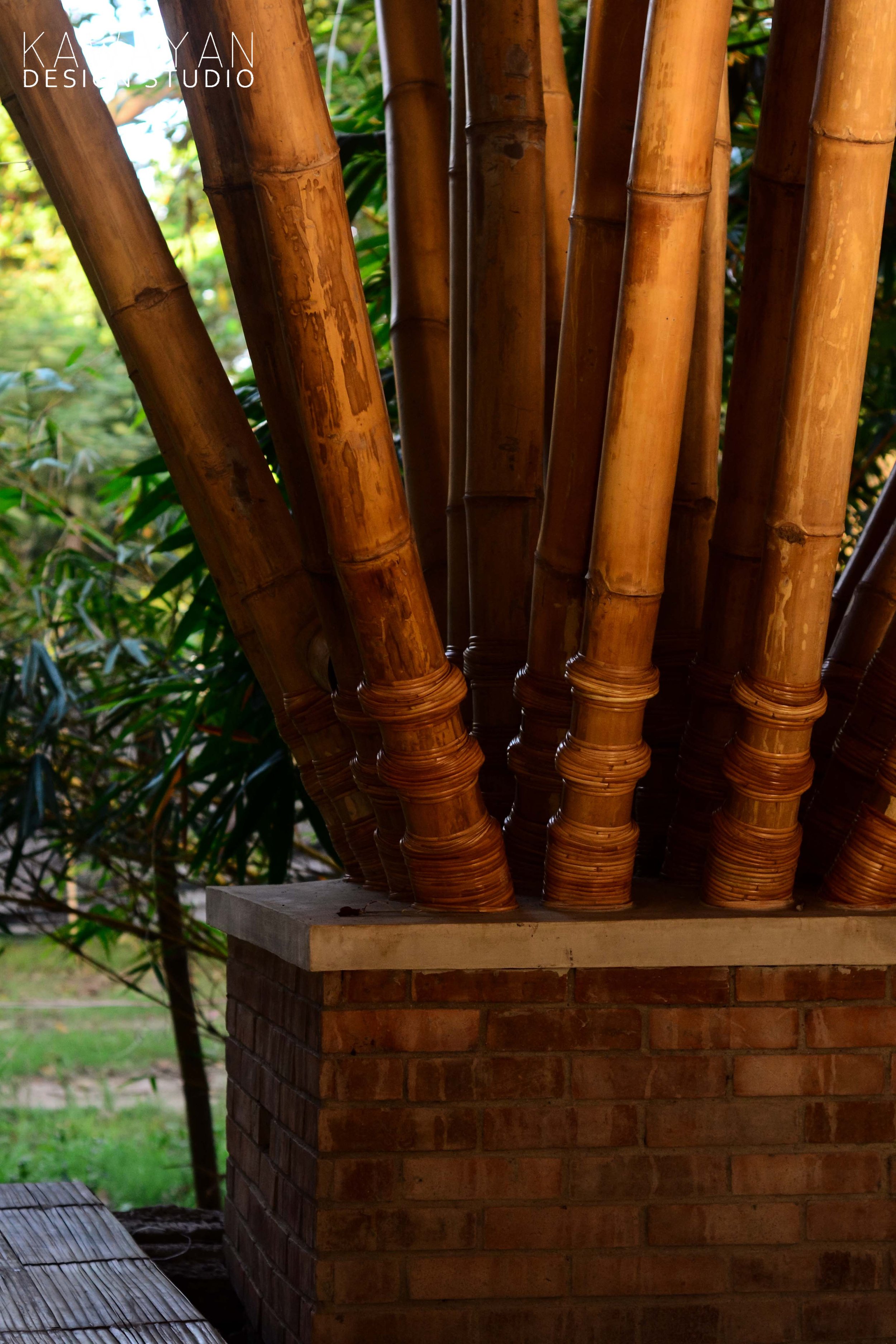The Bamboo Pavilion, Dumaguete PH
Bamboo is moving in the Philippines - the inertia and the passion is high and bamboo is getting noticed and being strongly considered for many building projects. The Bamboo Pavilion, Dumaguete is a landmark building in this growth process. Rhalf Abne of Kawayan Design Studio is the lead architect/designer and also the builder for the building. Ray Villanueva of Kawayan Collective supplied the bamboo and Jason Toralde provided the bamboo structural engineering.
Here is Rhalf Abne with his feedback to our questions:
1. Describe your bamboo project and how it came about.
This pavilion started with Jaime Ponce De Leon approached us with an intent of building a bamboo pavilion as an event place. The primary concept of this building is to create a Filipino inspired structure and highlight the local materials in the island of Negros Oriental. The Bamboo Pavilion is inspired by Kawayan Torogan, a traditional house by a "Datu" or "Sultan" usually built on stilt with beautiful carvings, interior posts, and often without an interior partition that makes it appears to be a large hall. It's also used as a venue for community affairs and planning.
To maximize the ruins of old structure, the same building footprint was used in the design and the carefully done brickwork on the drop-off area has been retained. Inspired with the architectural characteristics of Kawayan Torogan, the Pavilion floor level was raised to have a transition from the tropical garden, “carvings” was architecturally translated to fire wood bricks baked in the clay town of daro, a clump of 14-20 bamboo poles acting as the main columns, and thousands of bamboo poles to complete the structural framing of the open air pavilion. The typical roof of Kawayan Torogan was adopted with a ventilation gap between roofs to complete its character.
The Pavilion stands 16.5 meters tall and has about 575 sqm floor area. This is the tallest bamboo pavilion to date that has been built in the Philippines.
2. Tell us about how you started in bamboo.
Our team started working in bamboo at a humble city of Bais in Negros Oriental. At the beginning, we just wanted to build a community based hostel wherein it will offer “Filipino Culture” and we thought that bamboo will be a great ambassador material to do it. We did our research, interacted with the people who worked with bamboo and with their help began to build the structures. Through this process, we learned a lot and made us more equipped to build better bamboo structures. What’s more interesting is being there at the ground with our carpenters and learning together in every bamboo structures that we build.
3. Who constructs the buildings and if you can elaborate on the construction process, especially the artisans and special skills required, if any ?
We build what we design. The construction process starts with the design and plans, with this we will be able to quantify the poles we need and every poles has different roles and specifications. Luckily we have the Kawayan Collective an established bamboo provider in the province which makes our life easy as they provide treated and mature poles with the specifications that we require to build. The construction process is somehow similar to conventional structure wherein you will need specific material for a specific use – what’s different is you will learn to be more forgiving with the bamboo because every poles has unique curves.
4. What species of bamboo have you used in your bamboo journey and what are you
favourites?
We use Dendrocalamus Asper and Bambusa Blumeana to build in our projects because of the availability and it’s natural specifications.
5. What is the future for bamboo especially in the design and construction sector?
Bamboo will attract more interest and will be accepted not only as building material but also as a structural component, building codes will be made and we will see more bamboo structures here in the Philippines.
6. What are the main challenges in bamboo for you and how are you approaching these
challenges?
The main challenges in using bamboo is its limitations as a material – so we keep on innovating and resolve these limitations.
7. Who or what has influenced you in your bamboo work and why?
I really admire what Francisco “Bobby” Manosa has done – with his efforts to give Philippine Architecture it’s own identity. This may not be related to bamboo alone but it’s also the Filipino Culture is what pushes me to create with bamboo.
8. Share a typical bamboo detail used successfully that will be useful for our readers.
One detail that is significant for this building is the Concrete Pedestal to Bamboo Column Anchoring Detail.
The Bamboo Pavilion, Dumaguete, Philippines
Location: Bantayan, Dumaguete, Negros Oriental
Client: Jaime Ponce De Leon
Cost of bamboo construction: PHP 17 m
Bamboo Species used: Bambusa Blumeana
Bamboo builder: Kawayan Design Studio
Area: 575 sqm
Year Completed: 2023
Architect: Ar. Rhalf Abne, Kawayan Design Studio (https://www.facebook.com/kawayandesignstudio/)
Bamboo Supplier: Ar. Ray Villanueva, Kawayan Collective (https://sites.google.com/view/kawayancollective/home)
Structural Engineer: Engr. Jason Toralde
Photographs: Benedict Santacruz
Landscape Designer: Alan Tan

